was Tillandsia dodsonii
now Lemeltonia dodsonii (See DD02/17: for all new (DNA resolved) species & Cultivars.)
Click thumbnails for full size, scaled to a new window.
Lemeltonia dodsonii
Species Ecuador. Long pendent inflorescence. Perfumed.
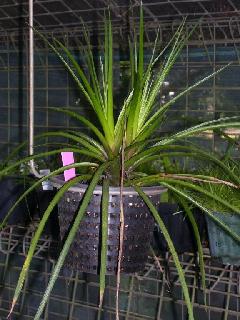
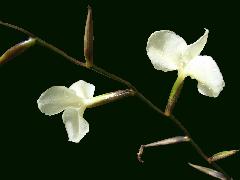
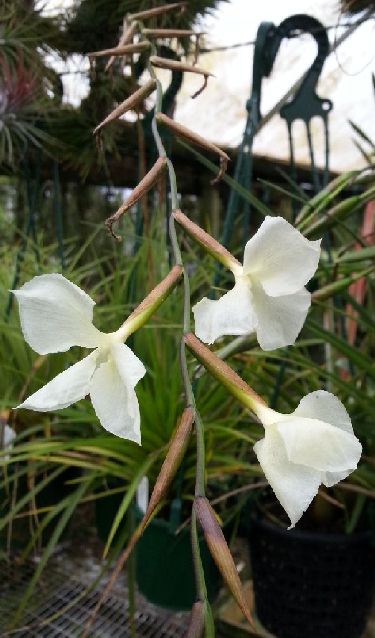
| Ross Little 03/10. |
Peter Tristram 03/10. |
Chris Larson 08/13. |
Starting with a question to the Tillandsia discussion group...
Justin Lee - "Hello all, anyone growing Tillandsia dodsonii well? I was wondering if it grows better as a mounted specimen or potted? Also is it a lover of strong light or not?"
Andrew Flower - "Mine are quite happy potted, down at ground level ie., quite low light."
Barry Genn - "I am happy with the way it grows for me in Brisbane on a mount and in quite strong light. It puts out plenty of roots and pups well, just about finished flowering now, I think it likes humidity."
Peter Tristram - I grow dodsonii both ways now (having seen Barry’s enviable conditions) and no problem with either, though the potted ones give more pups usually (and grow out of the pot then hang upside down when in bloom). Likes warm, humid conditions and seems to do best in bright indirect light. It’s not easy to photograph without a sophisticated studio like Bertie’s. Here’s one I took a few years back. P.S. Feed it too."
Ross Little - "I have been growing a T. dodsonii in a vanda pot for over 12mths, it flowered this past season & pupping, in northern NSW, gets afternoon sun only through 70% s/mesh, seems happy."
Derek Butcher - "I would not recommend it for Adelaide unless you had a cool house like Len Colgan has built. Even so, Len is having challenges."
Peter Tristram - "I would reckon Adelaide’s water would be a major problem for many of the more mesic species (it was all right over here!) though dodsonii and other similar species like monadelpha, scaligera, triglochinoides and narthecioides seem pretty hardy under a variety of conditions. T. acosta-solisii (attached) is far trickier I find, like cornuta, though I haven’t been game to experiment with them yet.
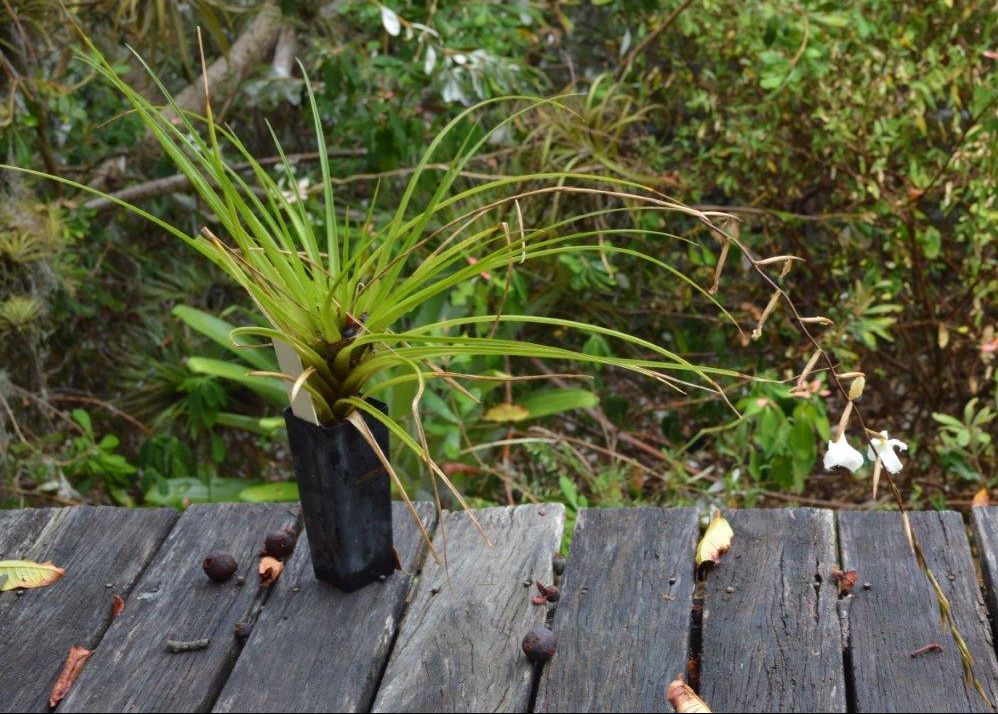
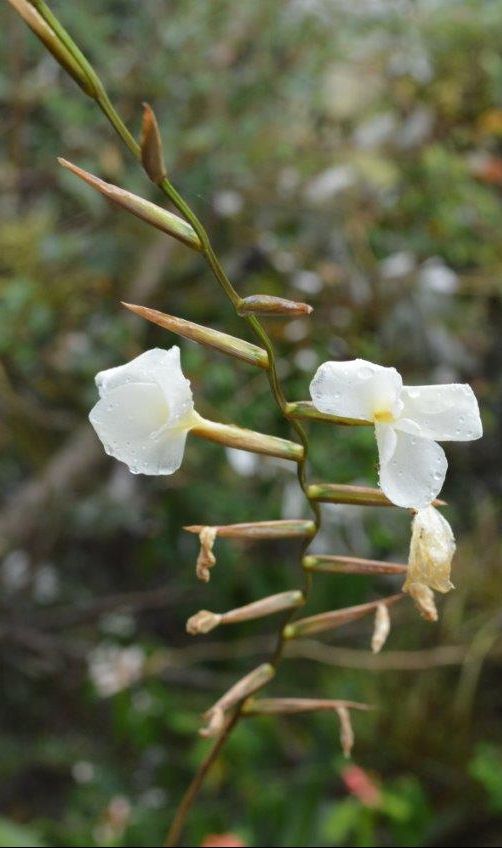
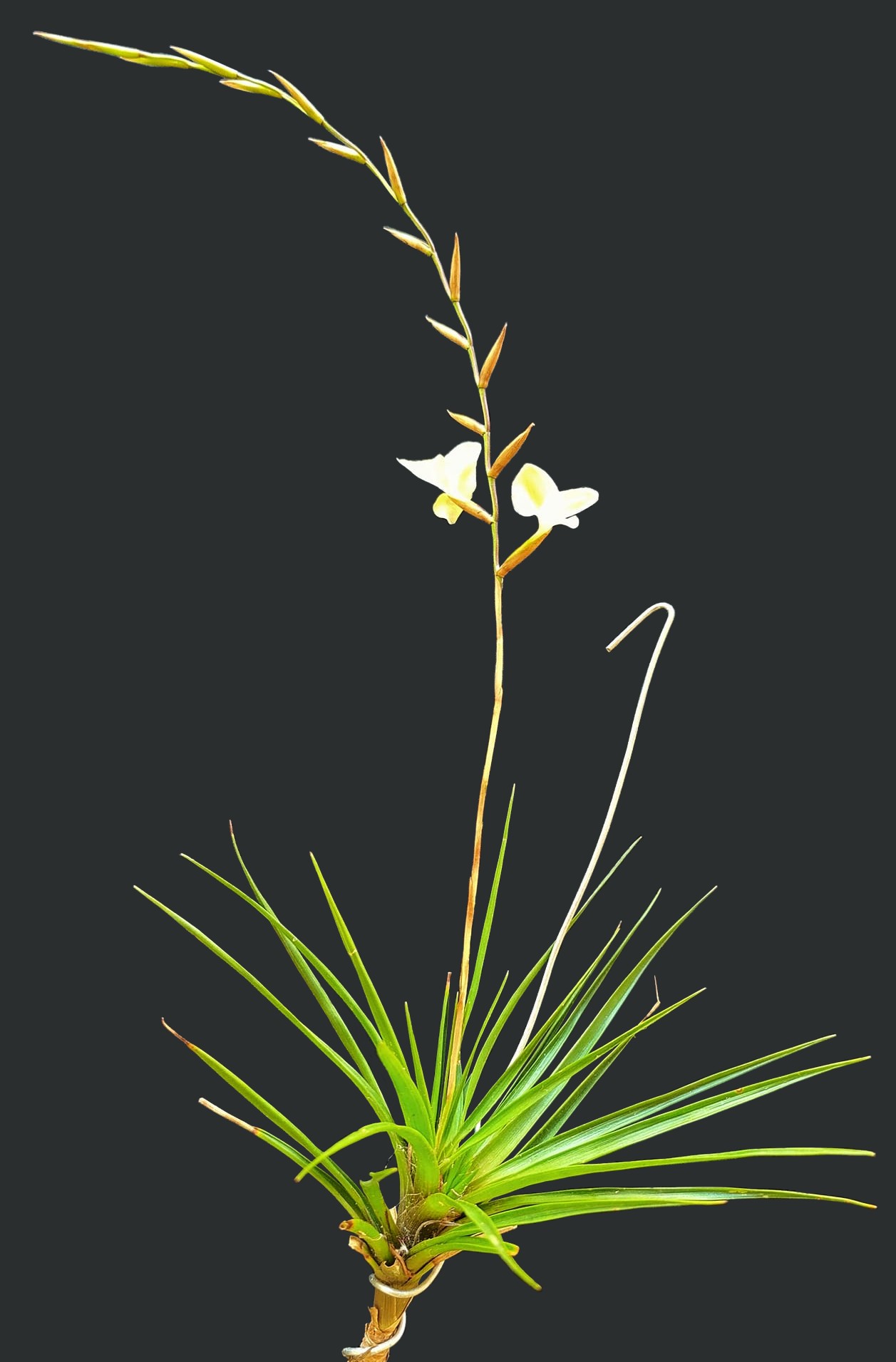
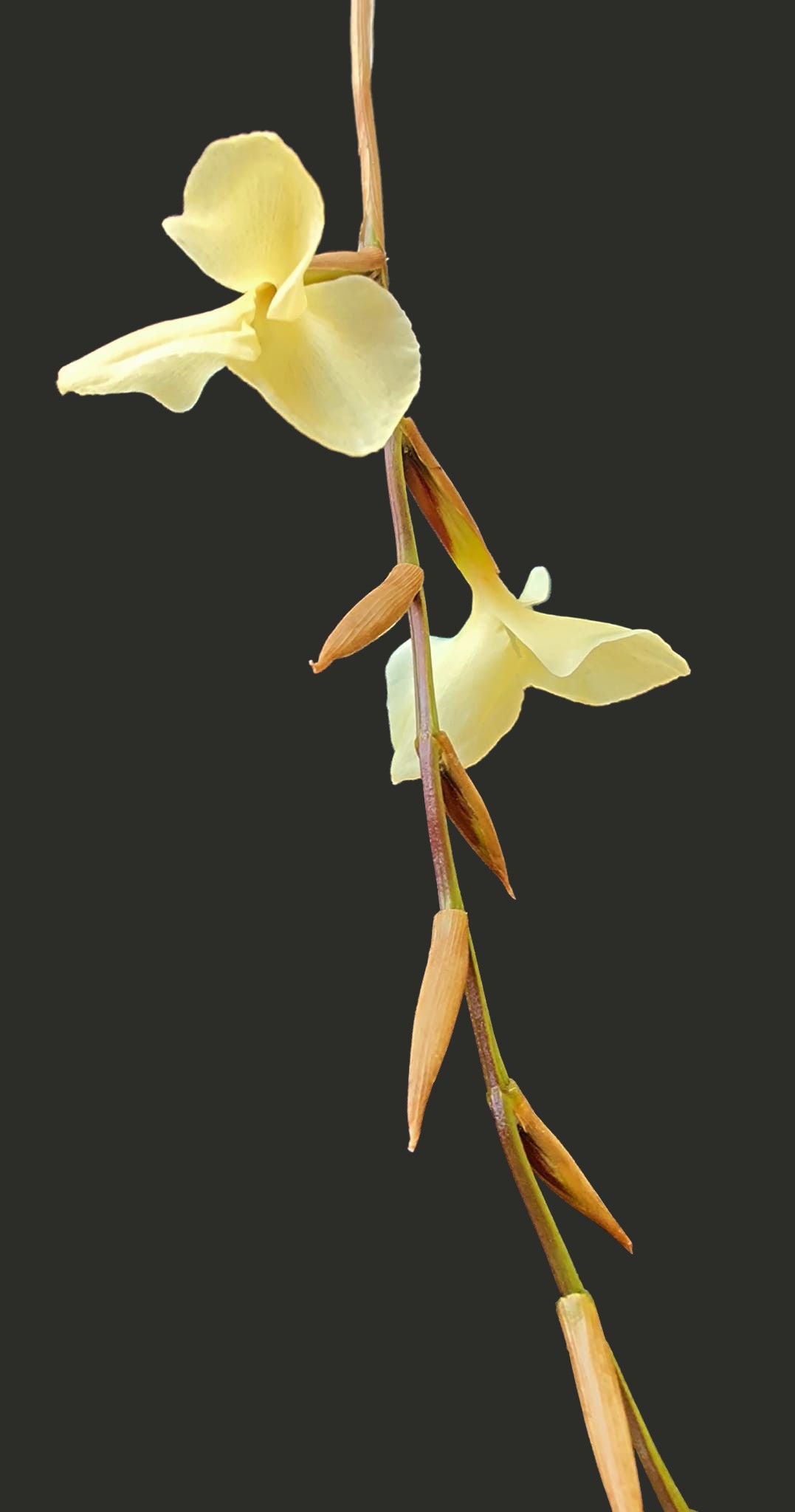
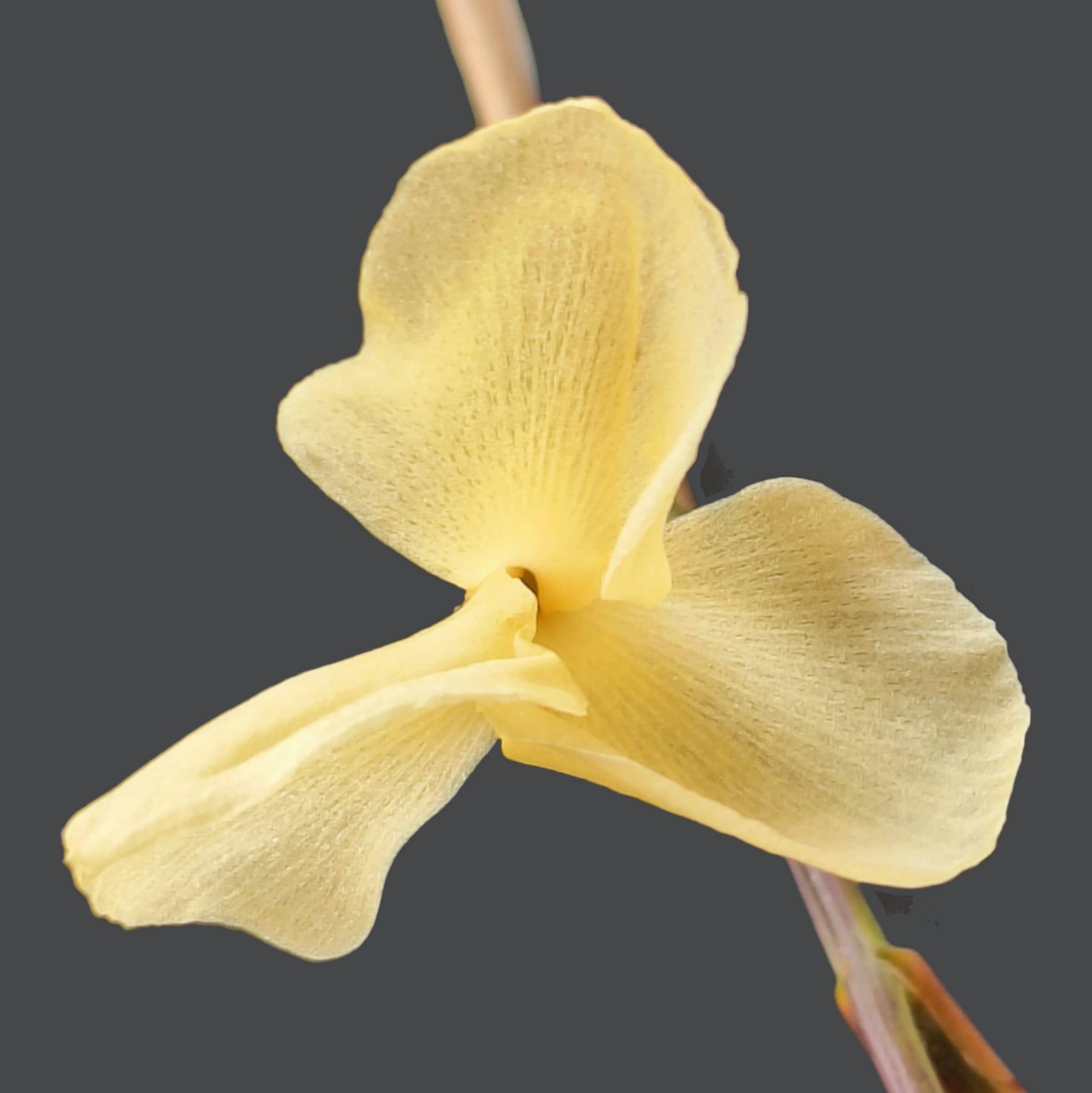
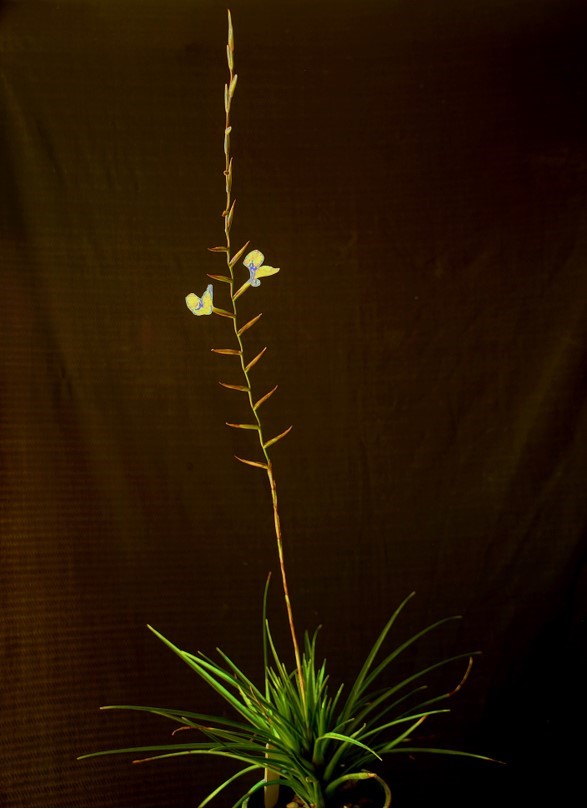
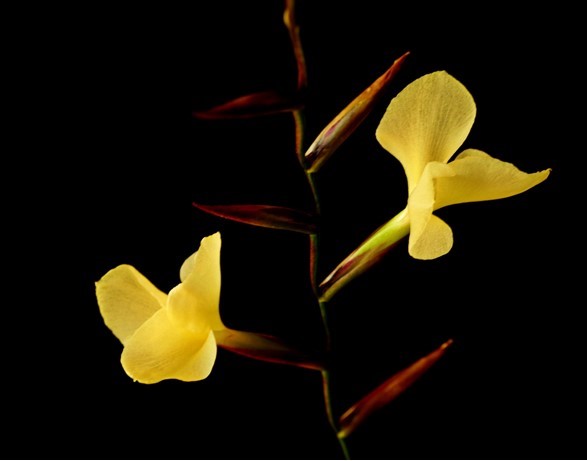
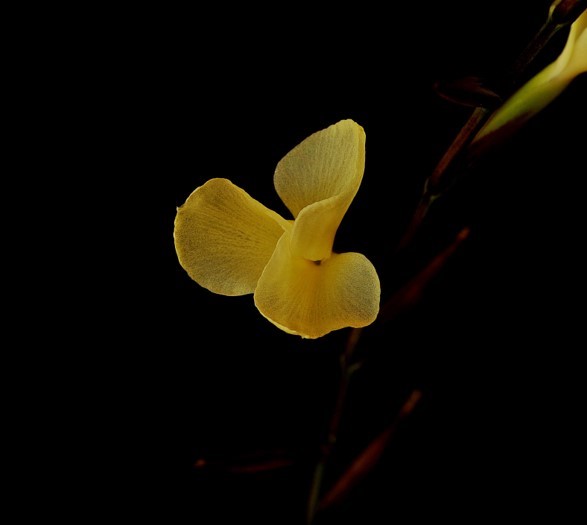 Greg Aizlewood ... "Not the first flowering but much healthier than previously. Lovely soft fragrance. Thanks to Peter Tristram for this clone."
Greg Aizlewood ... "Not the first flowering but much healthier than previously. Lovely soft fragrance. Thanks to Peter Tristram for this clone."
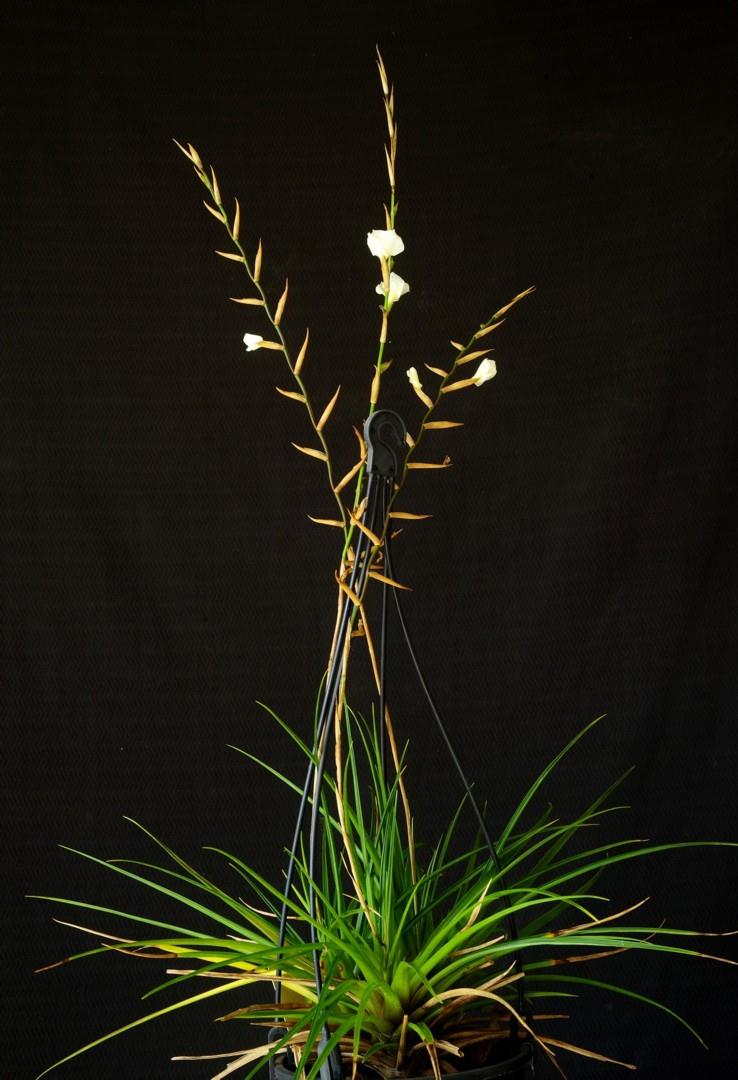
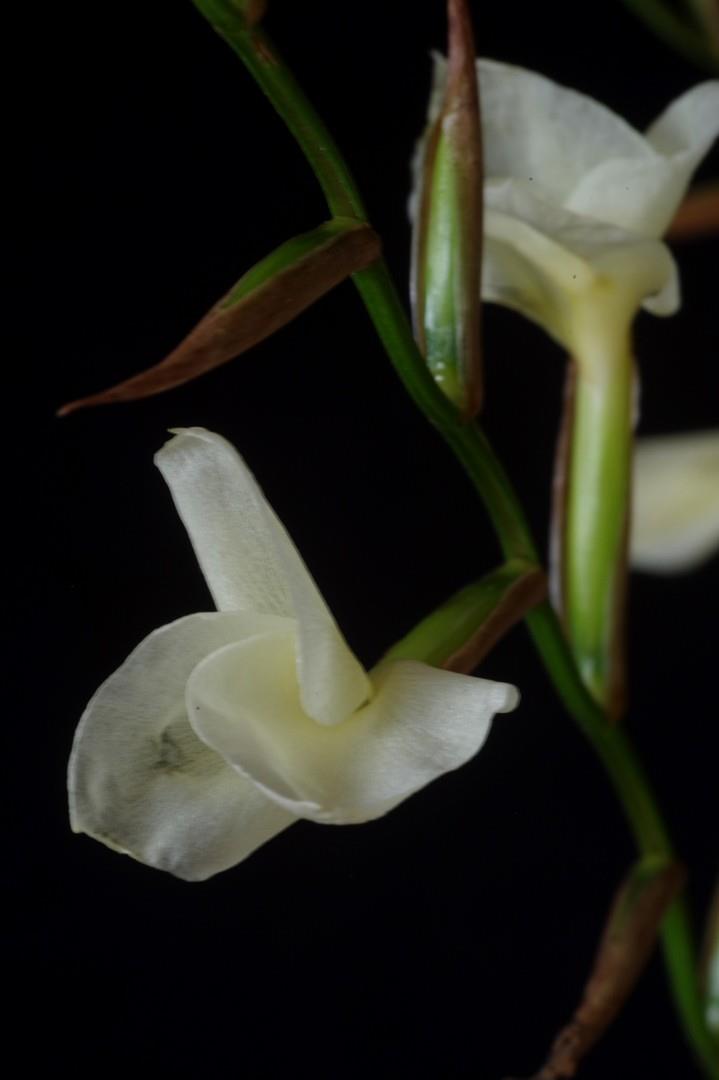
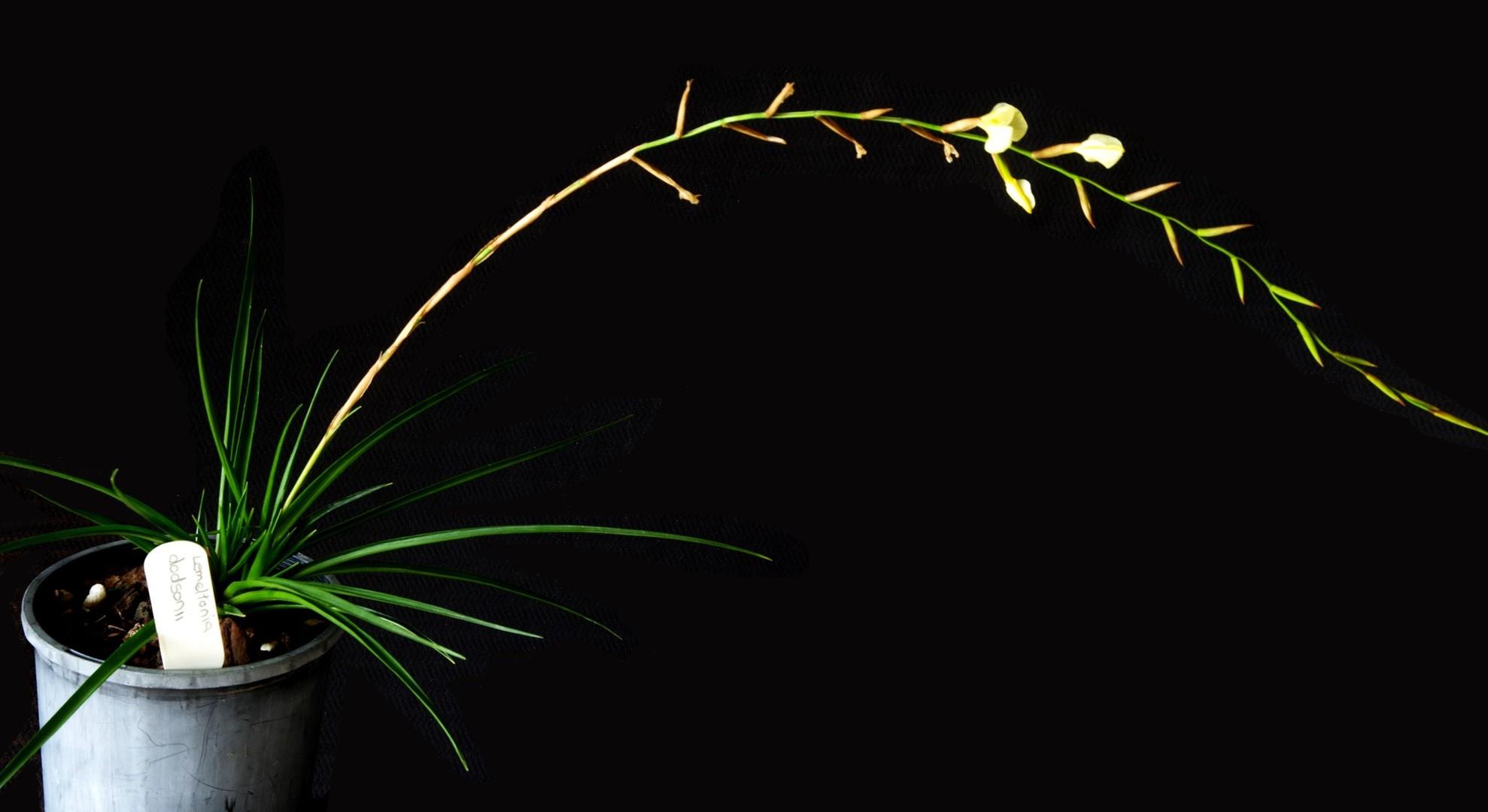
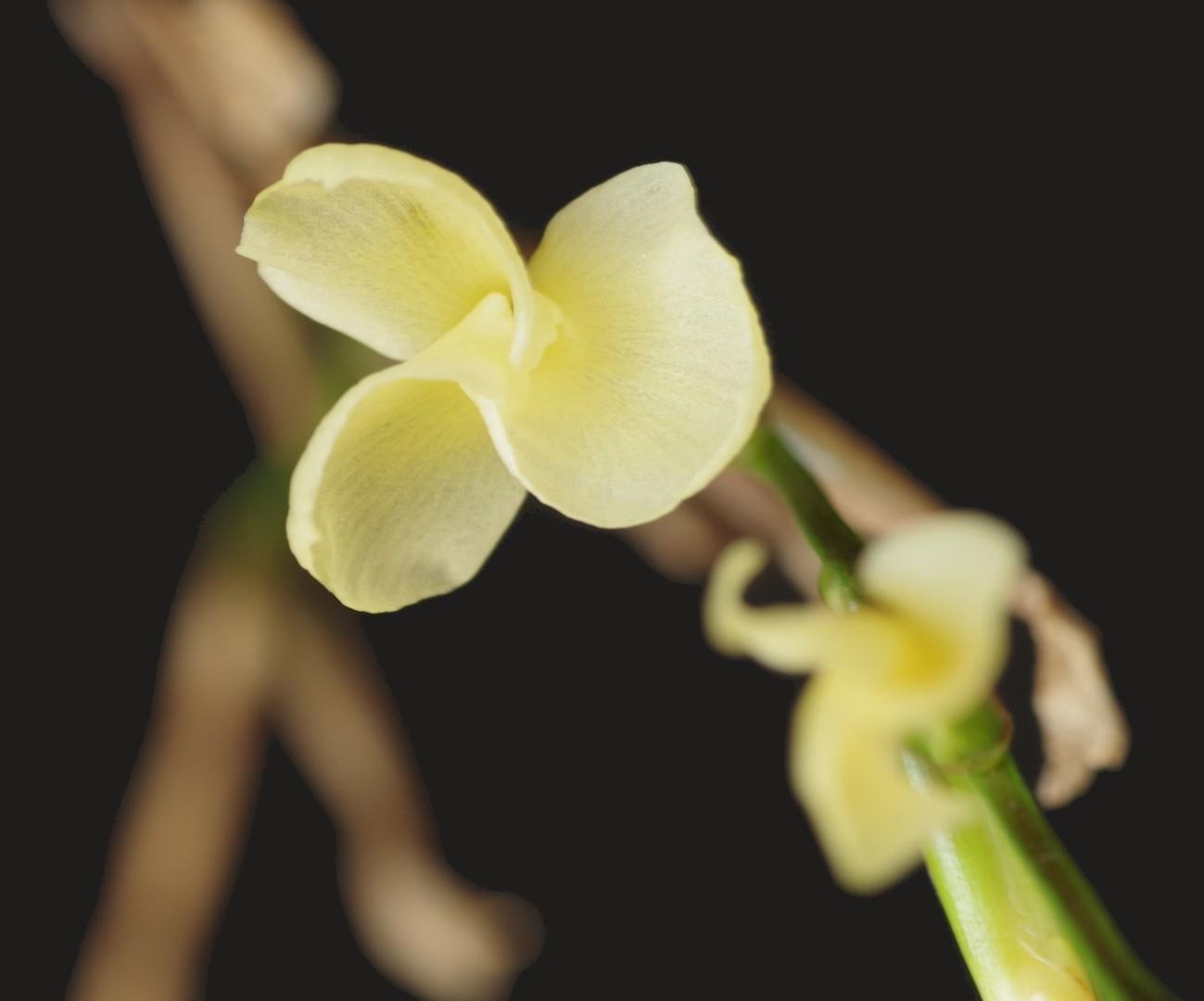
| Greg Aizlewood 02/25 ex Peter Tristram |
Greg Aizlewood 02/25 ex Selby gardens |
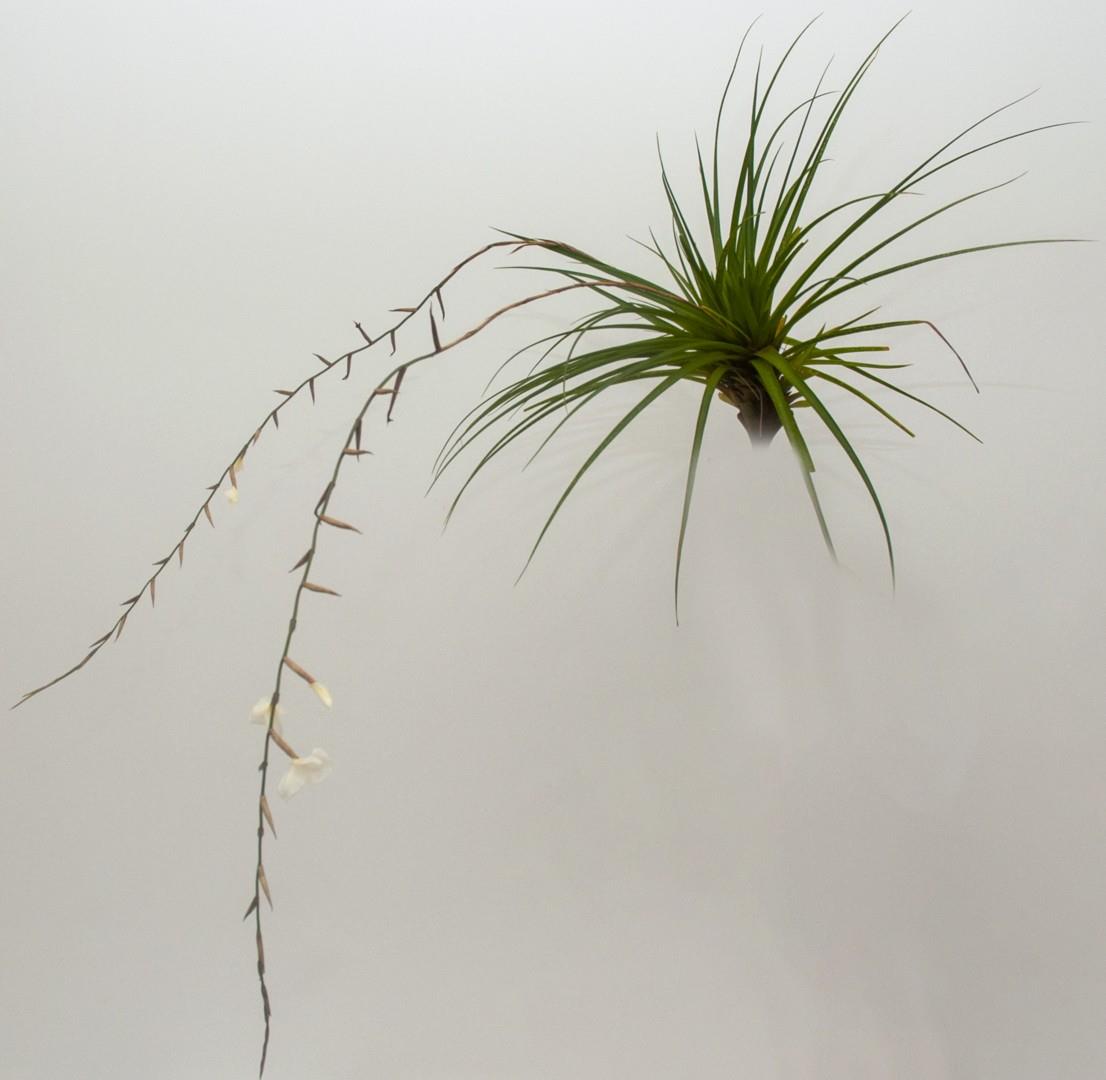
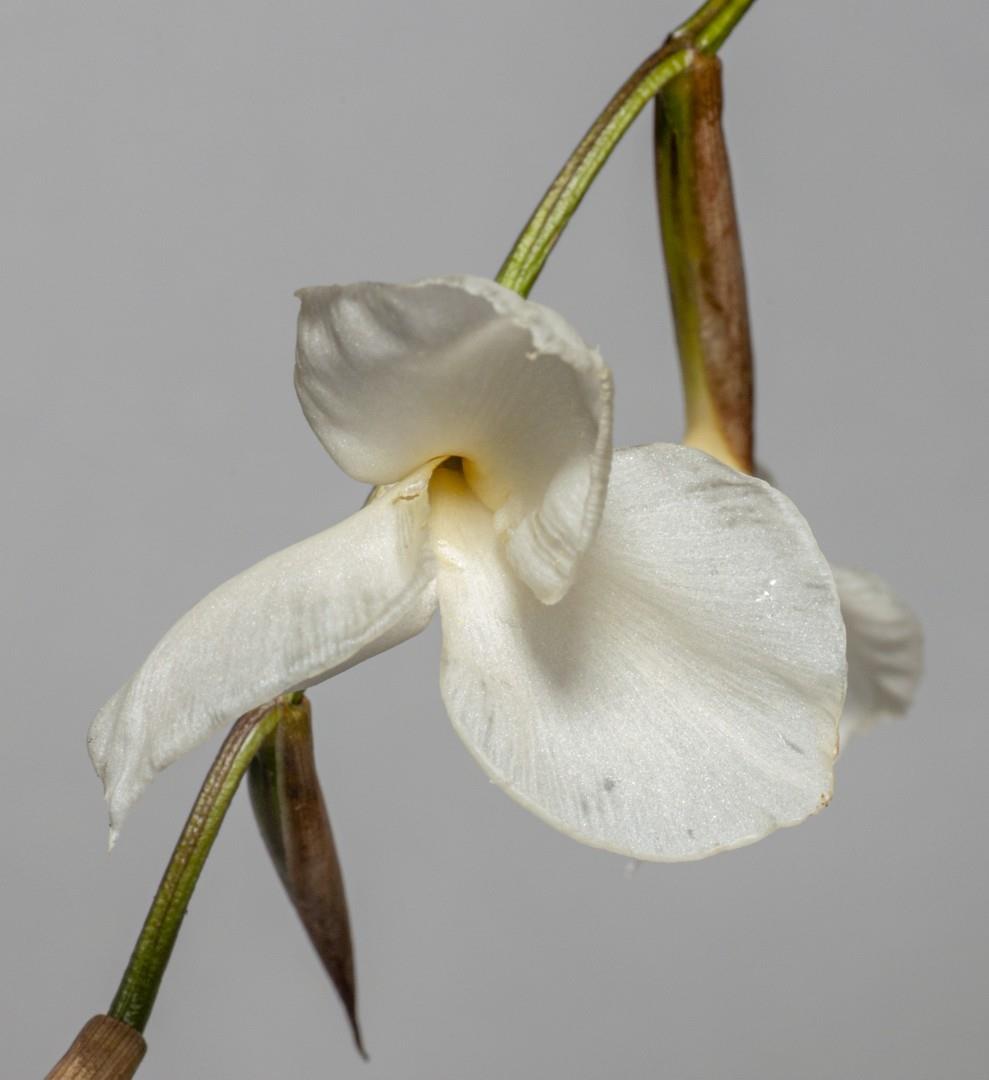
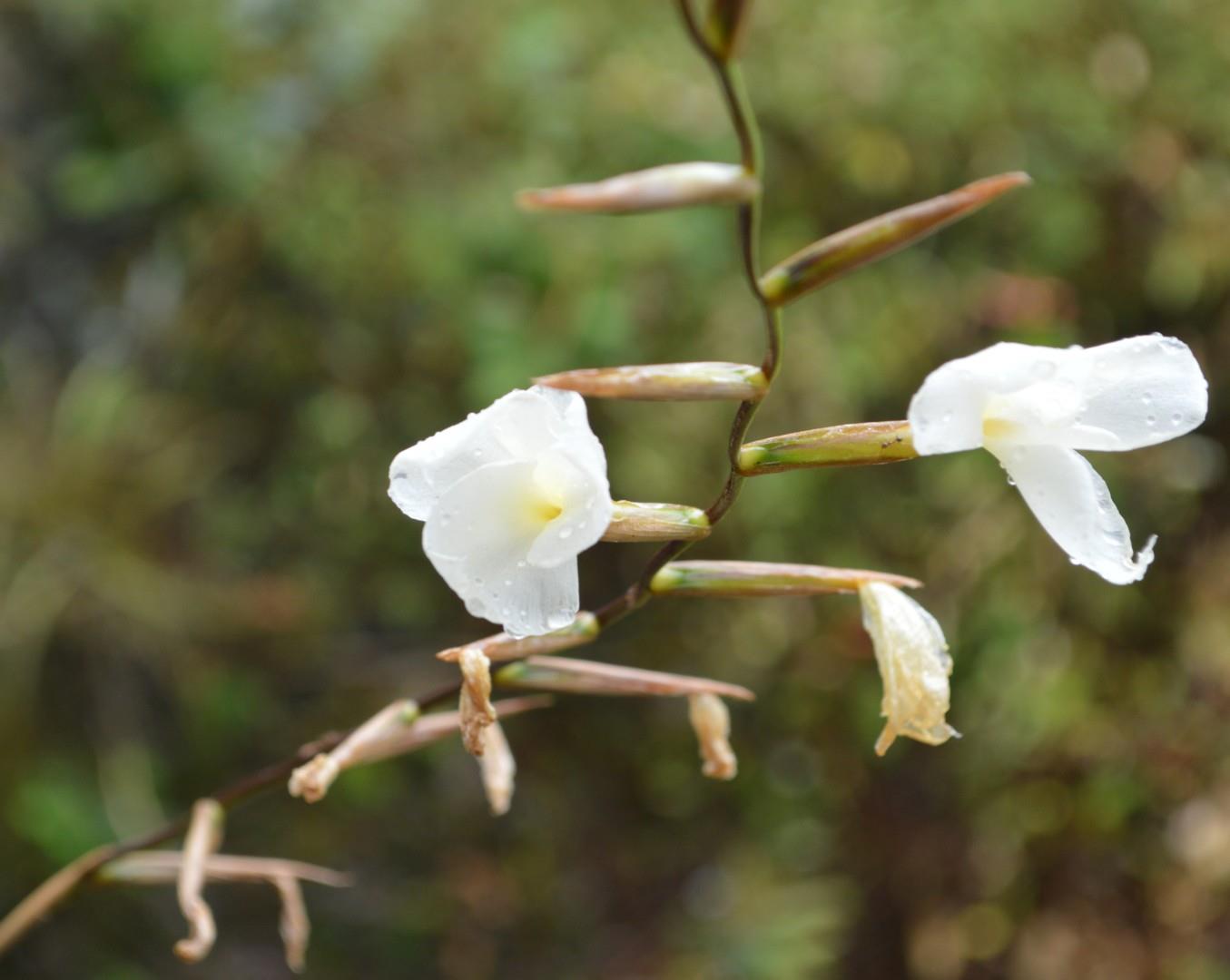 Robert Bower ... "Greg Aizlewood: Some pics of my version – white not yellow. Any chance of a swap?"
Robert Bower ... "Greg Aizlewood: Some pics of my version – white not yellow. Any chance of a swap?"
Pam Butler ... "I thought there were only white flowers. Happy to see both."
Greg Aizlewood ... "Firstly Rob, thanks for the invite to Dropbox which I have and have checked out the images in the link. I also have a white flowering form but this one came from Pete Tristram when he was moving so maybe it has some history we are not aware of. Pete if you are listening can you shed any more light on the subject please. Thanks also to Bob Hudson for his input."
Chris Larson ... "I can't find my pics. Whilst the petals on my plant are not white, they definitely have a yellow hue but are not this shade of yellow. Mine is ex Peter T. as well."
Peter Tristram ... "Plants were obtained from Kent's and Selby back in the 80s, basically identical too, so likely same clone. Petals are more creamy, not too yellow, nor white, so light affects photos, as Chris alluded to. Nice little species, for sure! Has anyone photographed it in habitat?"
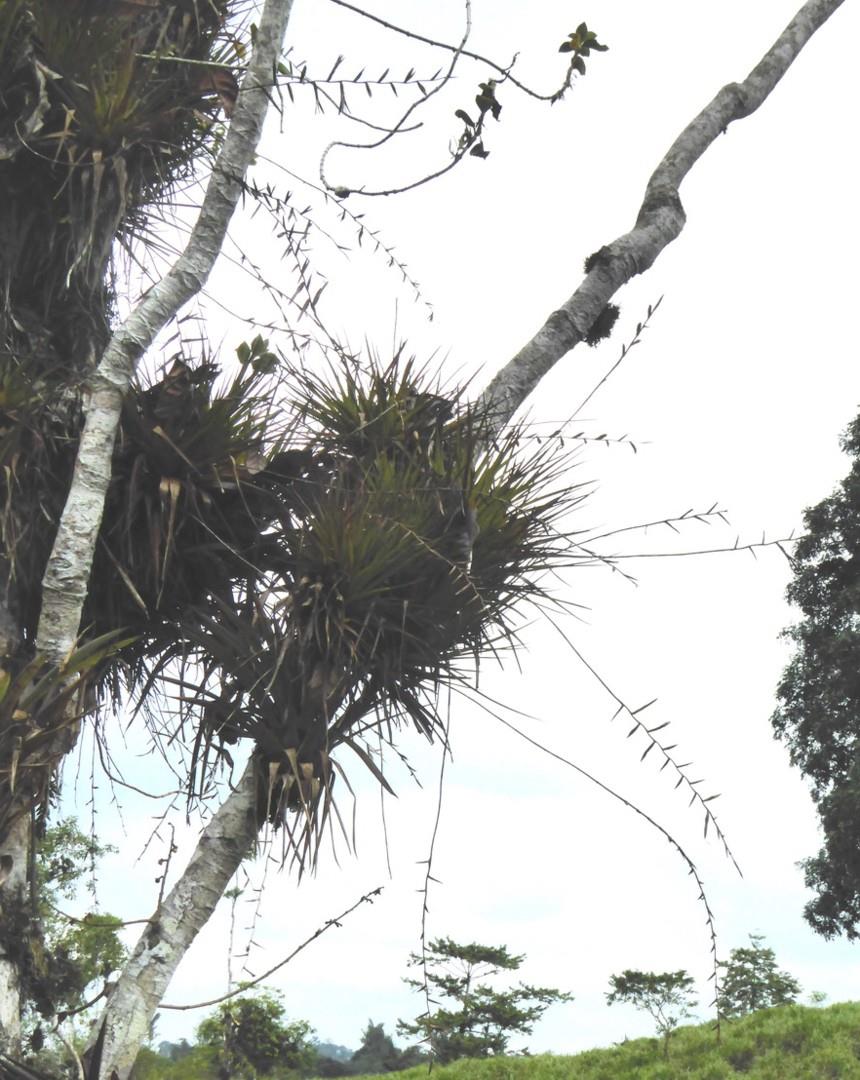
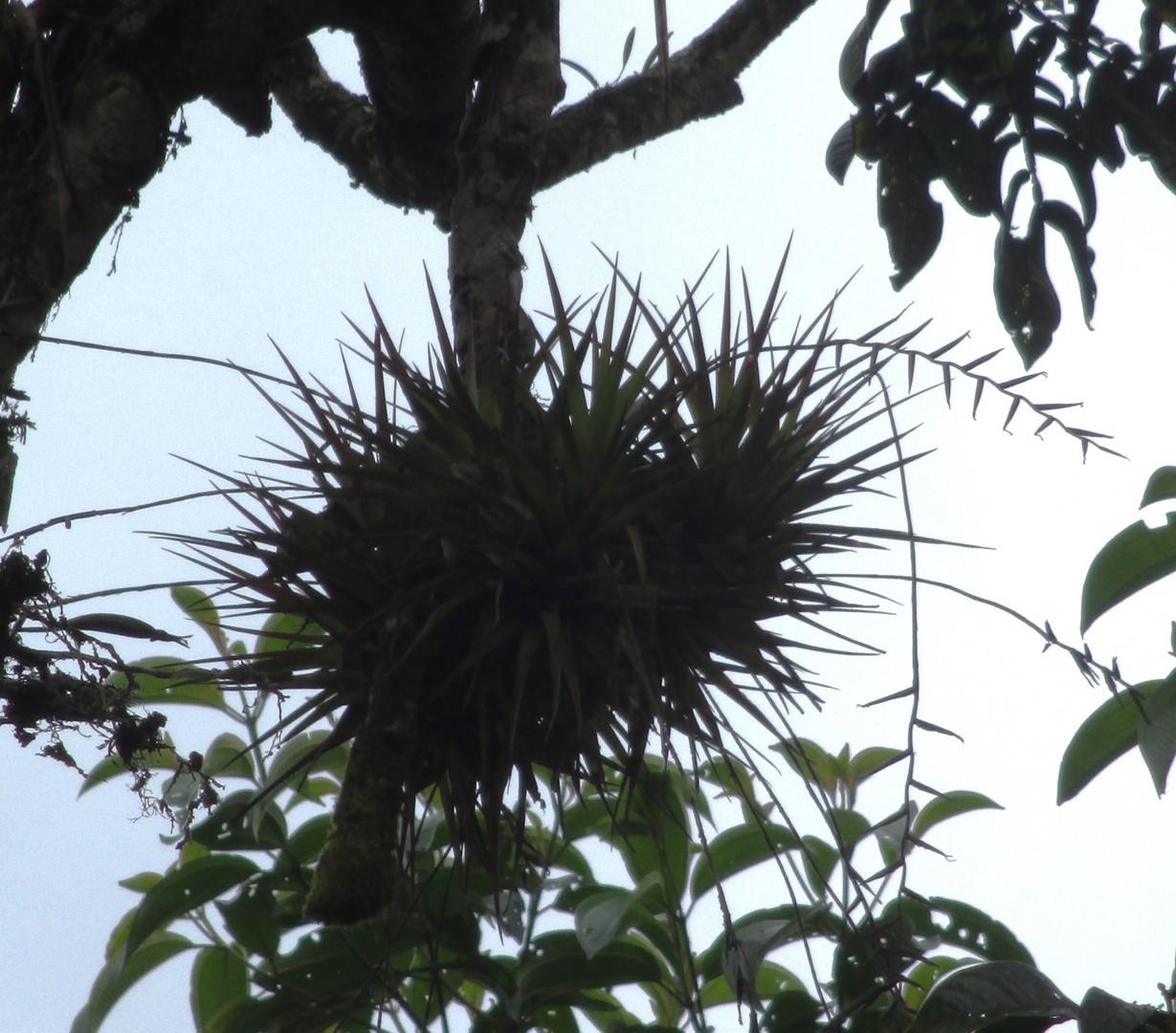
| Bruce Dunstan 02/24 in habitat |
Ross Little 02/24 in habitat |
Bruce Dunstan ... "Common in NW Ecuador near San Miguel de los Bancos"
Ross Little ... "Yes we saw it in habitat but it was difficult to get good photos against the bright sky. Not as precise sighting details as Bruce, it was in the Mindo area just up the road from the black and white cow, funny what sticks in one's mind as a memory jogger. We stayed at Sisakuna Lodge for a couple of nights while in the area."
Greg Aizlewood ... "Thanks for the input. The crazy weather we are having is, I believe, a major contributor to the variations in plant performance of late. A lot of petal colours seem more vibrant this year and plants that are shy flowers are sporting inflorescences. Will be interested to see the intensity of colour produced on some of these.
Regarding the colour of the petals I also recall some photos from Steve Molnar of a dodsonii with similar yellow coloured petals. Anthocyanins and carotenoids are the main sources of flower coloration, but there are other factors that can affect how colors present themselves. The amount of light flowers receive while they grow, the temperature of the environment around them, even the pH level of the soil in which they grow can affect their coloration. Another factor is stress from the environment. This stress can include a drought or a flood or even a lack of nutrition in the soil.
The most common pigments in flowers come in the form of anthocyanins. These pigments range in color from white to red to blue to yellow to purple and even black and brown.
A different kind of pigment class is made up of the carotenoids. Carotenoids are responsible for some yellows, oranges, and reds. Some interesting reading for those interested."
Lemeltonia dodsonii (L.B. Sm.) Barfuss & W. Till, comb. nov. Phytotaxa 279(1): 001-097. 2016
Basionym:— Tillandsia dodsonii L.B. Sm., Phytologia 28: 32, pl. 2, figs. f, g (1974), Type:—Dodson 5225 (holo US!, iso SEL!)
Tillandsia dodsonii L. B. Smith, Phytologia 28: 32, pl. 2, figs. F, G. 1974.
A T. narthecoide Presl., cui affinis, bracteis florigeris quam internodiis haud subduplo longioribus, omnibus partibus multo majoribus differt.
Desc from S&D p855
Plant flowering to 84 cm high.
Leaves many in a funnelform rosette, to 22 cm long, covered throughout with minute, flat, brown-centered scales;
Sheaths elliptic, ca 4 cm long, dark brown;
Blades narrowly triangular, ca 12 mm wide at base, the outer much reduced.
Scape erect, slender, much exceeding the leaves;
Scape-bracts erect, imbricate, elliptic, apiculate.
Inflorescence erect, simple, lax, many-flowered, sparsely pale-lepidote;
Rhachis very slender, flexuous.
Floral bracts spreading, to 30 mm long, exceeding the internodes and the sepals, ovate, convex and rolled around the sepals, thin-coriaceous, nerved;
Flowers short-pedicellate.
Sepals free, 20 mm long, elliptic, broadly acute;
Petal blades suborbicular, spreading 20 mm long, white with yellow eye;
Stamens and pistil deeply included.
Type. C. H. Dodson 5225 (holotype US), epiphytic in old orange trees along road, km 30 on Santo Domingo to Quito road, Pichincha, Ecuador, 1100 m alt, 27 Dec 1972.
DISTRIBUTION. Known from the type collection only.
Updated 18/02/25



















